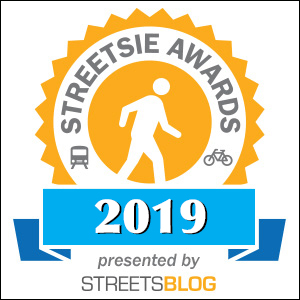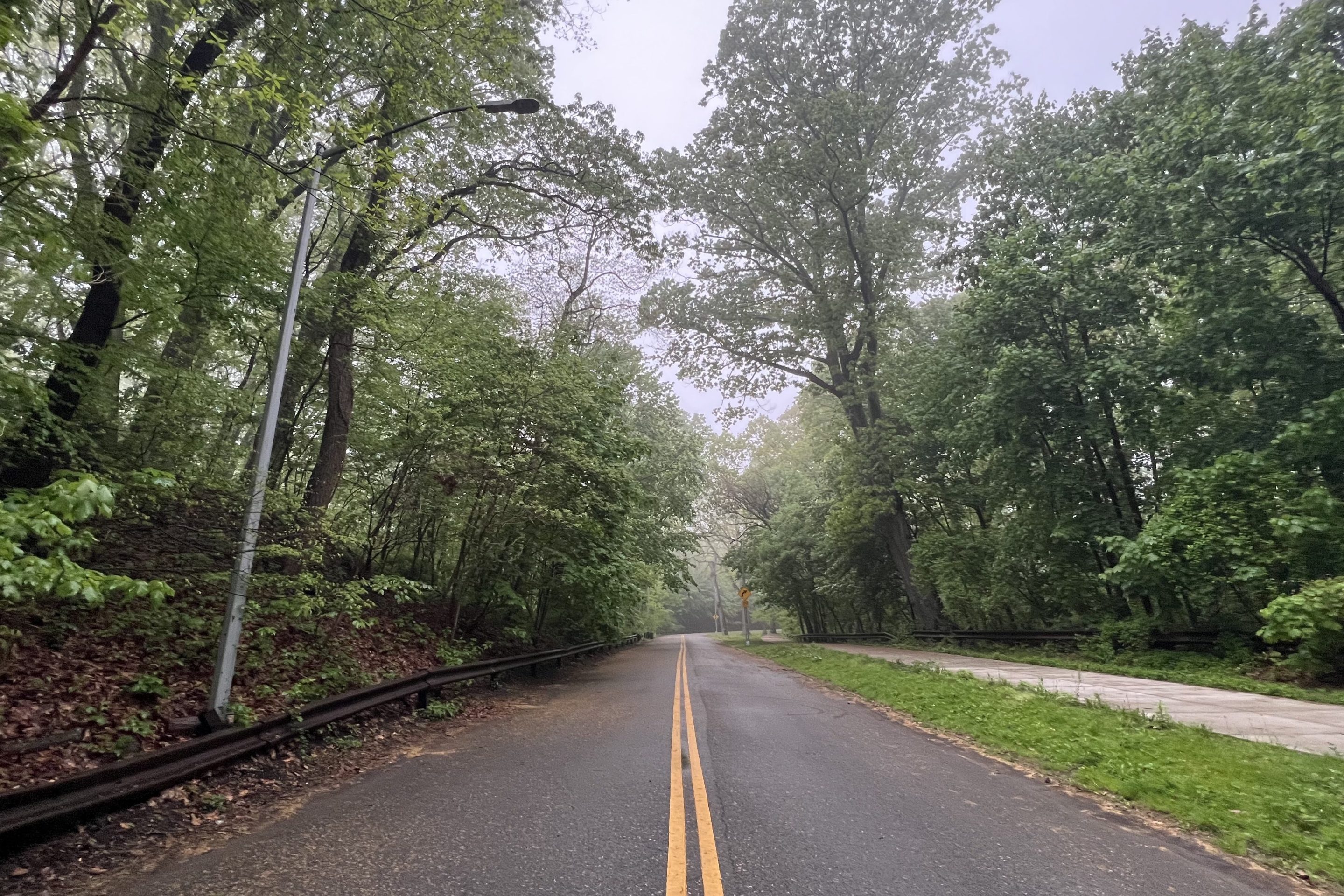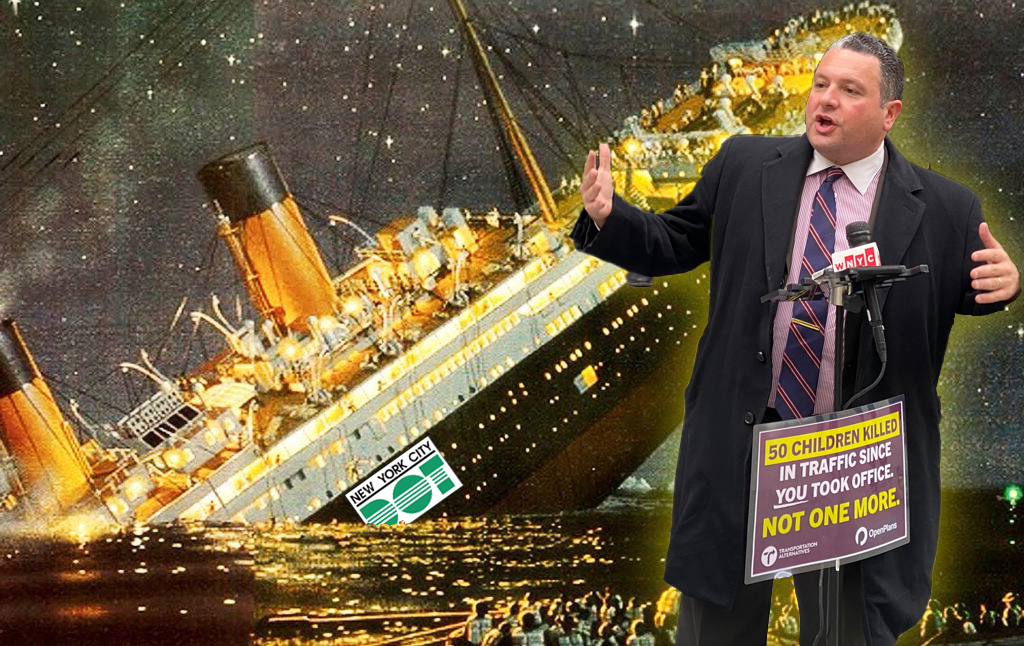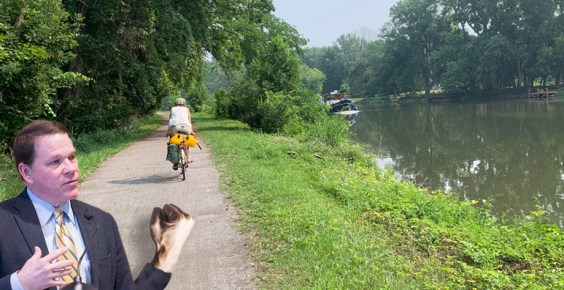
The end of the year brings a time for reflection and taking stock of the year's accomplishments and disappointments. We don't know what grade the mayor would give himself when it comes to his promises around street safety, but unfortunately for the mayor, Streetsblog has a more-stringent grading process than just pass/fail.
Oh, if only we could give grades based on the mayor's soaring promises. When it came to proposals to make the city's streets safer for pedestrians and cyclists and more responsive to the needs of bus riders, the mayor had ideas. Bus speeds improved by 25 percent by the end of 2020! A fully connected protected bike network by 2030! Oodles of pedestrian safety improvements! But the biggest promises came with the longest wait times, which drags down his overall grade with a series of incompletes. Here's Hizzoner's report card for the year:
AP GOVERNMENT: B
Leading with the administration's best foot forward, the mayor (quietly) and the Department of Transportation (more openly enthusiastically) did a great job of implementing the 14th Street Busway in October, refusing to back down in the face of lawsuits and laying out a car-free template that neighborhoods around the city are clamoring for. The mayor eventually took a victory lap by both riding and praising the M14, but when asked about expanding on the idea, the mayor lived up to his Brooklyn roots: "Wait 'til next year," he said. But the fact remains that with bus speeds and ridership up on the M14, the Busway is a thrilling success for any mass transit fan, or general foe of car-filled streets.
The busway was the highlight of the mayor commitment to improving citywide bus speeds by 25 percent by the end of 2020, a promise that's made some progress ... outside of actually improving the bus speeds themselves. Average bus speeds never got higher than January's 8.1 miles per hour, and as of November were actually down slightly, to 7.9 miles per hour. The mayor's office did follow through on the promise of NYPD tow teams going after bus lane blockers, with the introduction of seven teams of tow truck drivers in late January. Of the 1,200 intersections that are supposed to have transit signal priority installed, a DOT spokesperson said that the agency was on pace to install TSP at the 300 intersections that it planned to this year. The agency also did follow through with a promised pilot of a physically protected bus lane, on Archer Avenue between 150th and 163rd streets, though the physical barrier was pulled up before the year ended as the DOT searches for other barrier materials and enforcement ideas.
The mayor also was able to craft an agreement to reform the city's wild west private trash hauling industry. Thanks to Hizzoner and Council Member Antonio Reynoso, the city's private trash carting industry will go from a free-for-all to an industry broken up into neighborhood zones that are served by a maximum of three waste haulers. Reynoso predicts that the miles driven by the city's private garbage trucks will drop from 23 million to five million per year.
The promised signal retimings and installation of leading pedestrian intervals around the city that were promised as part of the mayor's pedestrian safety effort in February won't actually be installed until early 2020, a spokesperson for the Department of Transportation told Streetsblog. A DOT spokesperson also said that the effort to do high-visibility enforcement in corridors around the city was a success, but didn't share any statistics to back up that assertion.
The mayor promised a whole new world of placard enforcement in February. The city did establish a rule allowing it to take a placard away from someone who gets caught three times using it to illegally park. But that disciplinary action depends on enforcement, and so far, the DOT's promised 10-person team of placard abuse enforcers has yet to debut. We're also still waiting on the "placard census" that was going to look at the issue of fraudulent placards. INC!
In April, the mayor said he was "concerned" to hear that dozens of NYPD officers were racking up speed and red light camera tickets with seemingly no consequences whatsoever. That concern led to the vague promise of "action" — and after waiting almost the entire year (and after an NYPD officer with over 20 speed and red light camera tickets died in a speed-related car crash), the city finally did something. Specifically, every precinct's Integrity Control Officer will have to review an officer's driving record every year before renewing the officer's parking placard, and that review will include tickets handed out by traffic cameras. Still, it doesn't kick in until 2021.
Similar to the promise to speed up the bus system, a lot of pieces of the mayor's Green Wave bike safety plan aren't supposed to be finished for years. A proposed citywide protected bike lane network is supposed to be finished by 2030, and the 75 miles of bike infrastructure in 10 Bicycle Priority Districts isn't supposed to be finished until 2022. The target of 30 miles of protected bike lanes per year also doesn't start until 2020. But the city has begun a pilot of a traffic signal retiming that times green lights for the average cyclist travel speed, something known as a green wave, in a small stretch of Downtown Brooklyn.
The DOT did manage to keep up with, and even slightly surpass, its target goal of building 20 miles of protected bike lanes this year. The agency says that it's built 21.4 miles in total, highlighted by a 3.9-mile stretch on Fountain Avenue in East New York, and 3.6 miles of crosstown protected lanes in Manhattan on 52nd and 55th streets. There are also already future plans in place to complete the Central Park West protected bike lane, add Flatbush Avenue's first protected bike lane, tack almost 5 miles of protected lanes onto 4th Avenue in Brooklyn and (allegedly) finally finish the long-delayed phase 4 of the Queens Boulevard protected bike lane.
Bigger numbers will be achieved in the even further future thanks to a "streets master plan" pushed by Council Speaker Corey Johnson that de Blasio signed into law — with a clause the doesn't mandate the annual 50 miles of protected bike lane and the 30 miles of protected bus lanes and all the pedestrian plazas until de Blasio is out of office. Another INC!
PHILOSOPHY: C
The mayor has a lofty philosophy: Vision Zero. And he is probably the singular municipal executive in the nation who has made road violence central to his administration. But his strategies for turning philosophy into action are inconsistent. Vision Zero, of course, is built on three "E's": enforcement, education and engineering. But it ultimately fails because it is missing its fourth "E": elimination.
The mayor who is chauffeured in an SUV from the Upper East Side to a gym in Park Slope has simply done nothing to reduce people's use of cars.
Whatever the situation, the mayor has never asked people to get out of their cars. On bad air quality days, the mayor still won't tell people to leave their cars behind. When it came to the question of fixing or replacing the crumbling BQE, the mayor has let the comptroller, the Speaker of the City Council, Brooklyn Heights residents and an expert panel take the lead on what to do with the highway after his administration's original idea to run a highway in the place of the Brooklyn Heights Promenade for six years went over as well as the film version of Cats.
He has steadfastly — to the point of bullying our editor — refused to even consider pedestrianizing small areas of the city, as they do in ... virtually every city on the planet.
There is one ongoing city program to move people around without cars, the NYC Ferry. And yes, the ferry system is a transportation mode that provides an alternative to driving in to Manhattan for people coming from Soundview and the Rockaways and Bay Ridge. But the ferry is ultimately an expensive gimmick. It's something that gets the mayor headlines and something he can call is own, but isn't as scalable and certainly does not have the bang for the buck as subway or bus improvements (like the busway, for example). And the city's own demographic data shows that the average rider is much wealthier than the average New Yorker. So again, it's a great philosophical idea — let's have more transit — that isn't a Platonic ideal in reality.
There's also no sense that Vision Zero extends anywhere past the cubicles and machine shops of the Department of Transportation. The city's total vehicle fleet remains bigger than when the mayor took office. It took near-constant outcry after a dozen cyclist deaths this year to get the NYPD to stop responding to the deaths with ticket stings against cyclists, and the less said about the NYPD's consequence-free contempt for other road users the better. Despite the fact that we've got a city where pedestrians are constantly finding themselves weaving between cars parked on the sidewalk and in crosswalks and cyclists can't feel safe in any bike lane, the Department of Health has taken a hands-off approach to what all of this traffic mayhem is doing to the physical and mental health of New Yorkers.
The de Blasio administration also spent another year genuinely advocating for red light and speed cameras in school zones, holding multiple events to promote the installation of the cameras in order to show its support for the life-saving safety measures. But the mayor has never seemed interested in pushing the envelope of what automated enforcement cameras could do for New York City. Almost a year and a half after Council Member Brad Lander introduced the Reckless Driver Accountability Act, which would actually allow the city to take action against the recidivist speeders and red light runners that get caught by cameras, the mayor barely expressed familiarity with it and suggested that it wasn't an urgent thing to take care of. On the plus side, Lander says the bill will pass early in the new year and the mayor's Law Department is being very supportive.
That kind of refusal to see traffic violence as a systemic problem was summed up in one of the mayor's more unbelievable dismissals of a policy proposal this year. When city cyclists suggested they'd like a a bike mayor, an executive-level liaison who could help city agencies get on the same page when it comes to bike policy, Mayor de Blasio's response was to say that he was the bike mayor already. Twenty cyclists have been killed in the seven months since that declaration.
All that being said, we will give the mayor credit for showing backbone when confronted by the likes of Arthur Schwartz, various Chambers of Commerce types and rich NIMBYs who thought they could gum up the works on street safety with a bunch of lawsuits. The city didn't back down from a single project when well-heeled opponents of bus lanes or bike lanes tried to pick a fight, which shows that when he wants to, the mayor can win.
ENGLISH (RHETORIC): D
During his very brief presidential run, the mayor used the bully pulpit to bring up the idea of a national version of Vision Zero. The mayor nobly told a national audience about protecting the lives of kids and seniors, some of our most vulnerable citizens. The mayor has hyped Vision Zero the same way locally, but he's also fallen prey to some awful rhetorical habits this year.
He's given a bullhorn to the myth of the "distracted pedestrian" and he dragged us back to the cycling dark ages by actually entertaining the idea of a mandatory helmet law for cyclists. His constant driving habit earned him hefty ratios on every tweet he did about climate change. Worst of all though, the mayor continued to demonize immigrant delivery workers who use throttle e-bikes, even as they've killed or injured a fraction of the people that motorists do.
"I’m just not going to stop saying I think it’s a safety problem," the mayor said about e-bikes, even though their riders had only injured nine pedestrians in 2018, compared to literally thousands injured by car drivers. "You don’t see cars drive on the sidewalk a whole lot," he also said to a disbelieving population surrounded by cars parked on the sidewalk.
GEOMETRY: C
The mayor had a big geometry problem on his hands this year: How could he free up space on the streets and sidewalks that are getting buried under more and more deliveries and garbage?
De Blasio should be commended for starting a cargo bike pilot program to help figure out what kind of rules the city should come up with around the use of the electric cargo bikes. Done right, a cargo bike program will change the entire traffic landscape around the city and shift our streets from the current delivery truck-clogged nightmare to something much more free and open. But there's a stain on the pilot because like Citi Bike before them, a trio of big companies are getting the go-ahead to use battery-powered bikes that make life easier for their employees while restaurant delivery workers are still suffering under an unjust police crackdown.
As for the problem of how to get literal garbage off the city's sidewalks, the mayor's office is moving very deliberately and without much in the way of results. The DOT and Department of Sanitation put out a joint call for ideas on how to build sidewalk garbage containers earlier this year, but despite the request for expressions of interest closing on May 31, there hasn't been a single update on what was proposed and which ideas the city picked. (DSNY did not return repeated emails from Streetsblog.)
GYM: F
Boy, where to start? The mayor began the year insisting that he still walks places, and then had a series of high-profile instances of sticking with his car no matter what. In a city that's known for walkin' here, the mayor's presidential campaign announcement featured him being driven around in the back of an SUV. This fall, the man refused to walk from City Hall to Max Fish for an event tied to city nightlife, despite the fact that it's just a mile. And let's not forget that the guy so committed to his exercise bike refused to say when the last time he rode a bike was and won't commit to taking a bike ride with Streetsblog. Can you give someone an F-?
Final grade: A gentleman's C+. It would have been a B, but, lest we forget, pedestrian and cyclist deaths this year are up — meaning they are further away from the zero of Vision Zero.







